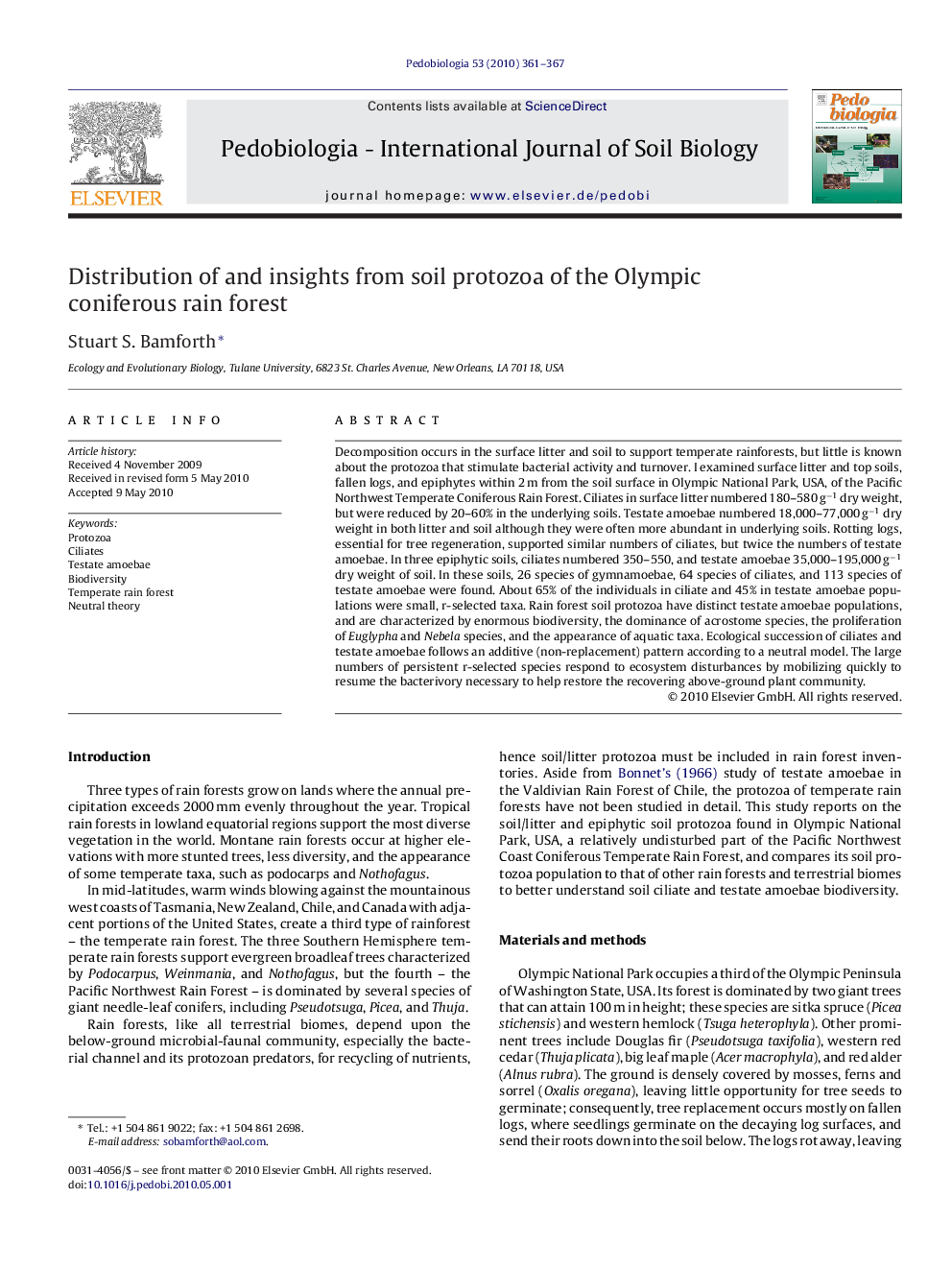| کد مقاله | کد نشریه | سال انتشار | مقاله انگلیسی | نسخه تمام متن |
|---|---|---|---|---|
| 2061258 | 1076449 | 2010 | 7 صفحه PDF | دانلود رایگان |

Decomposition occurs in the surface litter and soil to support temperate rainforests, but little is known about the protozoa that stimulate bacterial activity and turnover. I examined surface litter and top soils, fallen logs, and epiphytes within 2 m from the soil surface in Olympic National Park, USA, of the Pacific Northwest Temperate Coniferous Rain Forest. Ciliates in surface litter numbered 180–580 g−1 dry weight, but were reduced by 20–60% in the underlying soils. Testate amoebae numbered 18,000–77,000 g−1 dry weight in both litter and soil although they were often more abundant in underlying soils. Rotting logs, essential for tree regeneration, supported similar numbers of ciliates, but twice the numbers of testate amoebae. In three epiphytic soils, ciliates numbered 350–550, and testate amoebae 35,000–195,000 g−1 dry weight of soil. In these soils, 26 species of gymnamoebae, 64 species of ciliates, and 113 species of testate amoebae were found. About 65% of the individuals in ciliate and 45% in testate amoebae populations were small, r-selected taxa. Rain forest soil protozoa have distinct testate amoebae populations, and are characterized by enormous biodiversity, the dominance of acrostome species, the proliferation of Euglypha and Nebela species, and the appearance of aquatic taxa. Ecological succession of ciliates and testate amoebae follows an additive (non-replacement) pattern according to a neutral model. The large numbers of persistent r-selected species respond to ecosystem disturbances by mobilizing quickly to resume the bacterivory necessary to help restore the recovering above-ground plant community.
Journal: Pedobiologia - Volume 53, Issue 6, 10 October 2010, Pages 361–367